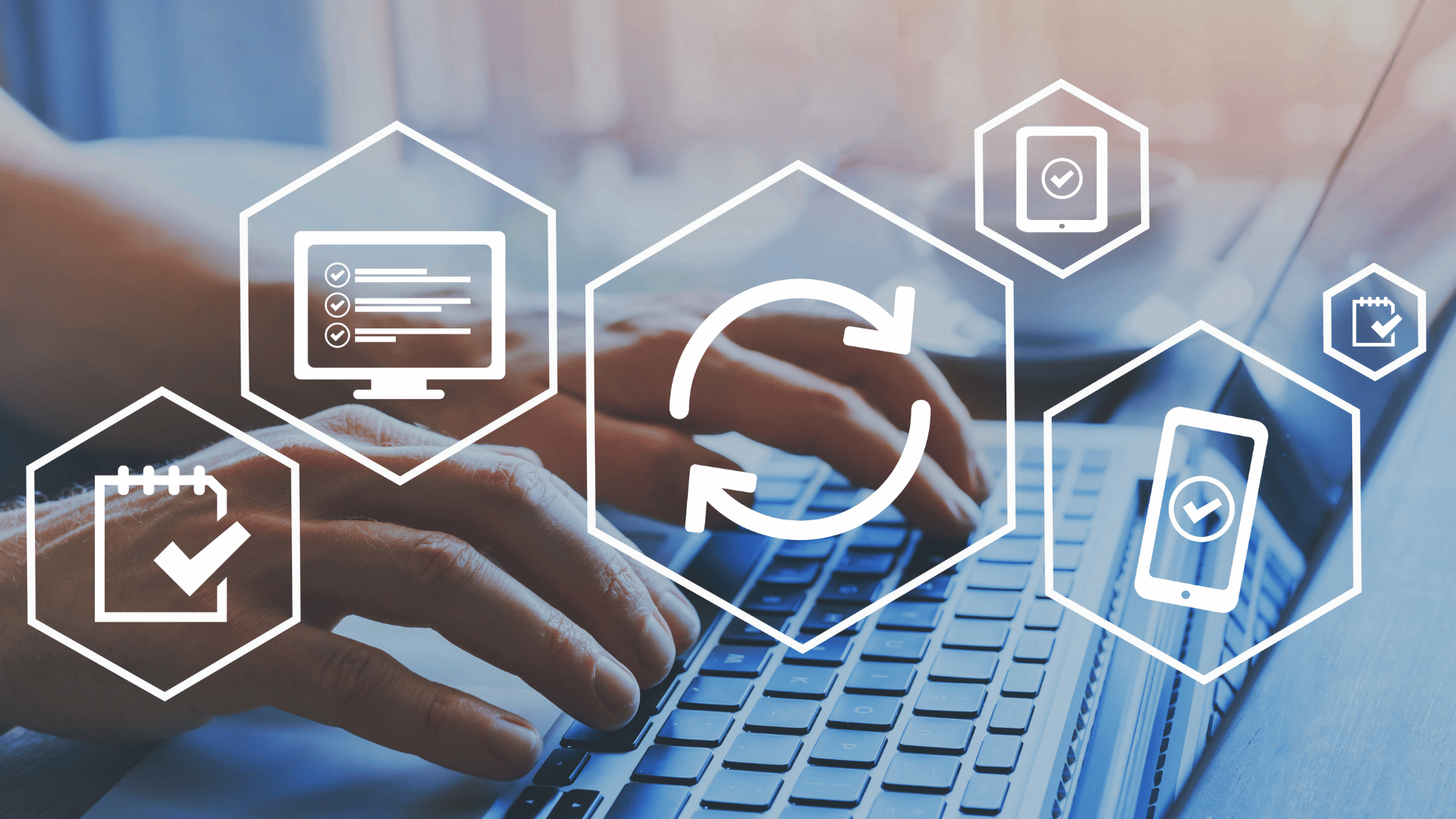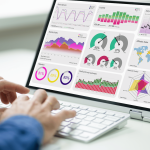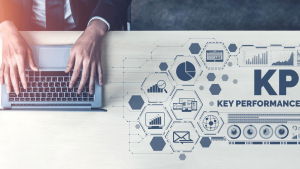Incorporating cloud attendance management with HR systems has become increasingly crucial in today’s workforce. Discover the significance of attendance management in HR systems and gain an overview of cloud attendance management. Unveil the benefits and insights offered by this integration to streamline employee time tracking and enhance overall efficiency. Embrace technology’s potential and empower your HR department with seamless attendance management solutions.
Importance of Attendance Management in HR Systems
Attendance management is vitally important for HR systems. Cloud-based technology has many advantages when it’s integrated with HR systems. Data integration becomes seamless and attendance tracking is simpler. Biometric systems can increase accuracy and reliability. But, there are issues like buddy punching and breaks that must be tackled. Successful integration case studies prove the benefits of cloud attendance management with HR systems.
There are tools for system integration, and security must be taken into account too. There may be an initial cost, but long-term savings come from better efficiency. Training guidelines should be created for employees to use the integrated system. AI, machine learning, and IoT will be important for attendance management in HR systems in the future.
It’s clear cloud attendance management is a must for HR systems. It improves workforce management and employee experience. It also provides opportunities for innovation and cost savings.
Overview of Cloud Attendance Management
Cloud Attendance Management is a tech-driven system for organizations to accurately keep tabs on employee attendance. It uses the power of cloud computing to make a central platform for recording, monitoring, and analyzing attendance data. Cloud-based software helps cut down manual paperwork and boost efficiency in workforce management.
With Cloud Attendance Management, organizations can enjoy various features like real-time tracking of employee attendance, automated calculation of work hours, and easy access to attendance records. Connecting this system with HR systems enhances workforce management. This means data between HR modules flows without manual data entry or synchronization.
A unique feature of Cloud Attendance Management is its ability to provide an improved employee experience. Employees can manage their attendance records, request time off, or view their work schedules through self-service portals. This gives employees control of attendance tasks and lessens administrative overhead for HR departments.
Integration with HR systems also enables organizations to generate insightful reports and analytics regarding employee attendance. This data can be used to find trends, detect issues like absenteeism or tardiness, and make informed decisions about resource allocation.
By taking advantage of cloud technology in attendance management and connecting it with HR systems, institutions can upgrade their overall workforce management practices while keeping accurate and reliable records.
Integrating Cloud Attendance Management with HR Systems: Streamlining your employees’ attendance, so you can easily keep up with your favorite show!
Benefits of Integrating Cloud Attendance Management with HR Systems
Integrating cloud attendance management with HR systems offers a multitude of benefits, such as efficient workforce management and enhanced employee experience. With streamlined processes and real-time data, businesses can optimize their human resource operations and improve overall productivity. Embracing the power of cloud technology, this integration empowers organizations to make data-driven decisions and create a seamless experience for their employees.
Efficient Workforce Management
Cloud attendance management integrated with HR systems is key to successful ops and efficiency in an organization. Benefits? Accurate tracking, real-time monitoring, optimized scheduling, streamlined processes & data-driven decisions. This integration also promotes employee engagement, productivity & satisfaction!
A case study shows the effectiveness: a company seamlessly integrated the two and eliminated manual errors in time tracking, reduced admin overheads, and improved workforce efficiency. Plus, they got accurate payroll reports with ease.
Cloud attendance & HR integration is vital for businesses to optimise resources and meet labor regulations. Result? Streamlined & data-driven management of staff, leading to higher productivity & employee satisfaction.
Enhanced Employee Experience
The improved employee experience is essential when connecting cloud attendance management to HR systems. By using the potential of cloud-based technology, organizations can offer their staff a smoother and more efficient way to manage their attendance, leading to an enhanced employee experience.
- Accuracy: With cloud attendance management connected to HR systems, employees can easily keep track and record their attendance in real-time. This removes the need for manual time tracking, lowering mistakes and making sure attendance data is precise.
- Convenience and Flexibility: Cloud-based attendance management systems provide staff with the freedom to access their attendance details from anywhere, anytime. They can log in using their computers or mobile devices, perfect for remote workers or employees on-the-go.
- Staff Empowerment: Connecting cloud attendance management with HR systems empowers employees by giving them control over their own attendance records. They can view their schedules, request leave, or change their work hours without going through a long approval procedure.
Plus, the improved employee experience also takes into account improved communication between employees and managers about attendance matters, helping build trust and transparency within the organization. It establishes a positive work atmosphere where employees feel appreciated and assisted in managing their work-life balance effectively.
Integrating cloud attendance management with HR systems not only simplifies administrative procedures but also creates a culture of responsibility among employees. By providing them with user-friendly tools and giving them the power to manage their own attendance, organizations can enhance the whole employee experience and increase productivity.
A fact about enhancing employee experience through integration is that, according to Deloitte [Source], companies that have properly integrated cloud-based attendance management with HR systems saw an average increase in employee satisfaction of 20%. This shows the good effect such integration can have on employee experience and satisfaction levels.
Combining systems may be difficult, but with these step-by-step instructions, you’ll have your cloud attendance management perfectly integrated with your HR systems quickly!
Steps for System Integration
- In this section, we will explore the steps required for integrating cloud attendance management with HR systems.
- We’ll discuss the process of data integration and delve into the integration with HR management systems.
- Get ready to discover the key elements and considerations involved in seamlessly merging these two vital components of modern workforce management.
Data Integration
Data integration: the process of combining data from different sources. It creates a unified format, so data can be accessed, analyzed and used across departments. Data integration eliminates silos, improves data quality and enables better system interoperability.
To achieve this, there are five steps:
Step 1: Data extraction – retrieving data from databases, applications, files or APIs.
Step 2: Data transformation – transforming the data into a standardized format for analysis or storage. Cleaning, formatting and aggregating data are all part of this.
Step 3: Data loading – loading the transformed data into a central repository.
Step 4: Data mapping – aligning fields and attributes of the source and target datasets.
Step 5: Data validation – auditing the accuracy and completeness of the integrated dataset.
Data integration makes processes smoother, and helps organizations gain insights from consolidated data. Informed decisions, based on reliable info, can be made, improving operational efficiency.
Integration with HR Management Systems
Efficient Workforce Management: Integrate cloud attendance management with HR systems for streamlined workforce management. Analyze attendance data for informed decisions on scheduling, staffing, and resource allocation.
Enhanced Employee Experience: Simplify processes like leave requests and time-off approvals with cloud attendance management integrated with HR systems. Employees can access their records and manage their schedules, resulting in increased transparency and autonomy.
Integration with HR systems requires attention to detail. Address human errors while inputting data and mitigate issues like buddy punching and frequent breaks.
Select the right tools for seamless data integration and protect sensitive data with access controls. Initial investments are required but long-term cost savings can be achieved through improved efficiency and accurate payroll processing.
Conduct a training needs assessment and provide training resources for employees to use the integrated system effectively.
Look towards the future with AI, machine learning, and IoT integration for real-time data and accurate attendance tracking.
Streamline attendance tracking with best integration practices.
Best Integration Practices
When it comes to integrating cloud attendance management with HR systems, following the best practices is essential for a seamless and efficient process. In this section, we’ll explore the key strategies for streamlining attendance tracking and making the most of a biometric system. By implementing these practices, companies can enhance their workforce management, improve accuracy, and optimize HR operations.
Streamlining Attendance Tracking
Attendance tracking is vital for effective HR management. Streamlining this process with cloud-based attendance management systems brings real-time data updates, easy access and automated reporting.
Here’s a 5-step guide to do it:
| 1. Implement a centralized system – all info in one place, removing manual processes and reducing errors. |
| 2. Utilize biometric technology – fingerprint or facial recognition scanners for precise verification. |
| 3. Automate attendance recording -cloud-based systems save time and ensure accurate data capture. |
| 4. Enable self-service functionality – empower employees to monitor their own attendance. |
| 5. Integrate with HR management systems – seamless data exchange between modules, eliminating duplicate data entry. |
Streamlining attendance tracking leads to improved efficiency, less errors and better employee experience. Plus, it can tackle buddy punching and frequent breaks. But don’t forget the security aspect, use robust measures to protect employee data. With cloud-based systems, organizations save costs in the long run. Comprehensive training for employees is key for a successful integration. Looking to the future, AI and machine learning may further enhance attendance tracking capabilities. Don’t miss out – streamline your attendance tracking today! Biometric systems are the future of time management – your fingerprints will tell it all!
Utilizing Biometric System
Biometric systems in attendance management are a valuable asset for organizations. They use unique physical or behavioral traits, like fingerprints and facial recognition, to authenticate employee identities and keep track of attendance. This tech provides a secure and efficient way of collecting attendance data, making sure only allowed people can access confidential info.
To understand the advantages of biometric systems for attendance management, take a look at this table:
| Improved Accuracy | Biometric systems eradicate the risk of manual mistakes or illicit practices such as buddy punching. Resulting in always accurate attendance records. |
| Enhanced Security | By relying on special biological markers, biometric systems offer a higher level of security than traditional means such as ID cards or passwords. |
| Cost Savings | The implementation of biometric systems reduces costs linked to producing and substituting ID cards and taking care of attendance records. |
Biometric systems also provide extra benefits apart from accuracy and security. For example, it simplifies attendance tracking, eliminating the need for manual data input and paper timesheets. Employees only need to scan their biometrics when they arrive and leave, saving time for them and HR staff.
Say goodbye to human errors and buddy punching. System integration guarantees productive attendance management, with reliability and tech savvyness.
Challenges in System Integration
Integrating cloud attendance management with HR systems can bring remarkable benefits, but it does come with challenges. This section focuses on addressing these challenges, including:
- Overcoming human errors
- Tackling the issue of buddy punching
- Managing frequent breaks
By exploring these sub-topics, we can better understand the obstacles that organizations need to overcome when integrating these systems and discover effective strategies to mitigate their impact.
Overcoming Human Errors
Organizations need to implement measures such as automation and validation checks to reduce human errors in the integration process of cloud attendance management with HR systems. Technologies like barcode scanners or biometric systems can accurately capture attendance data without relying on manual input.
Training and clear guidelines should also be provided. Reminders and audits can help emphasize the importance of accurate attendance tracking.
Advanced analytical tools can detect and rectify errors. They can analyze attendance patterns, detect discrepancies, and point out overlooked inconsistencies.
These strategies can help ensure accurate attendance records, improve payroll processes, and enhance workforce management efficiency. Overcoming human errors is essential for smooth operations.
Trying to put a stop to buddy punching and frequent breaks is like trying to catch a greased pig at a BBQ – it’s very hard.
Addressing Buddy Punching and Frequent Breaks
Organizations should take action to tackle unauthorized timekeeping practices, such as buddy punching and frequent breaks. Strategies like educating employees, utilizing biometric technology, enforcing strict policies, real-time monitoring, conducting routine audits, and implementing a reward system can help address the issue.
Moreover, organizations should communicate with employees regarding attendance policies. This will create a transparent and accountable culture.
Tools for System Integration
Discover the power of integration tools in streamlining the process of connecting cloud attendance management with HR systems. In this section, we will provide an overview of popular integration tools and guide you in selecting the right tool for your organization’s needs. Prepare to enhance efficiency, accuracy, and data synchronization as we delve into the world of system integration.
Overview of Integration Tools
Integration tools are vital for connecting and syncing up various systems for streamlined data management. These tools help integrate cloud attendance management with HR systems, leading to better employee experience and oversight.
Below is an overview of the components of integration tools used for integrating cloud attendance management with HR systems:
| Component | Function |
|---|---|
| Data Mapping | Maps out data fields between attendance management and HR systems for precise synchronization. |
| API Integration | Integrates different software solutions with Application Programming Interfaces (APIs). |
| Database Connectivity | Connects databases, enabling data transfer and synchronization. |
| Workflow Automation | Automates workflows with rules and triggers, like time tracking, leave approvals, and shifts management. |
| Reporting and Analytics Tools | Generates reports on attendance trends, employee performance, and productivity metrics. |
Integration tools have error-handling mechanisms to identify and fix data inconsistencies and system failures. They also offer customization options for individual organizational needs without much development or extra resources. This flexibility makes sure there’s a tailored integration solution that boosts workforce management efficiency while also securing integrated systems.
Security Considerations in Integration
When integrating cloud attendance management with HR systems, it is crucial to prioritize security considerations. This section explores the measures for protecting sensitive data and implementing strong access controls, ensuring the utmost security in the integration process.
Protecting Sensitive Data
Sensitive data protection is a must when integrating cloud attendance management with HR systems. Organizations store confidential and personal info and they must ensure security. Integration needs robust measures to protect data from unauthorized access or breaches.
To protect data, organizations should consider security measures. Encryption techniques safeguard data – both in transit and at rest. Authentication protocols, such as multi-factor authentication, can provide an extra layer of security. Only authorized personnel can access sensitive info.
Access controls are vital for protection. Organizations should use role-based access control mechanisms. Employees get assigned roles/permissions based on their job. This restricts unauthorized users.
Organizations must update security systems and software patches regularly. This mitigates security risks and maintains integrity. Audits and risk assessments help identify gaps/vulnerabilities and take appropriate actions.
Implementing Access Controls
Organizations must follow 4 steps for successful access control implementation.
Step 1 – Define User Roles & Permissions. Different roles based on job responsibilities and access grants. E.g. HR Managers full access, employees only own records.
Step 2 – Use Role-Based Access Control (RBAC). Permissions assigned based on roles, simplifies access management and applies security policies across the system.
Step 3 – Implement Two-Factor Authentication (2FA). Extra layer of security, users must present 2 ID forms to access system. Can be password and verification code sent to mobile or email.
Step 4 – Review & Update Access Permissions. Regular audits of user access permissions and updates when roles change or employees leave.
Protects sensitive data and helps maintain privacy regulations. Only authorized personnel can access attendance info, protects employee privacy and prevents unauthorized data use or disclosure.
Finally, assess access control measures for any potential vulnerabilities and train & educate employees on secure access practices. Cloud attendance management with HR systems ensures confidentiality, integrity, and availability of employee attendance data.
Cost Analysis of Integration
In the realm of integrating cloud attendance management with HR systems, one crucial aspect that requires careful consideration is the cost analysis. This section will delve into the financial implications of such integration, exploring the initial investment required as well as the potential long-term cost savings. By understanding the cost dynamics involved, organizations can make informed decisions regarding the integration process and maximize its efficiency and value.
Initial Investment
Integrating cloud attendance management with HR systems requires an initial investment. Factors like organization size and chosen tools will affect the cost. Data migration, hardware/software upgrades, implementation teams, training expenses and ongoing support must be taken into account. Organizations should calculate these costs and assess any unique requirements before making a decision.
Investing in integration can save money in the long run – a penny saved is a penny earned, unless you’re spending it on paperwork!
Long-term Cost Savings
Long-term cost savings are a major factor when it comes to integrating cloud attendance management with HR systems. Implementing this integration can bring several financial advantages over time.
- Less Administrative Costs: Integrating cloud attendance management with HR systems eradicates the need for manual tracking and processing of attendance data. This automation leads to decreased administrative costs for managing attendance records, creating reports, and calculating payroll.
- Enhanced Efficiency: Real-time data synchronization between attendance management and HR systems helps optimize workforce planning and scheduling. This heightened efficiency minimizes cases of overstaffing or understaffing, resulting in cost savings through optimized labor utilization.
- Decreased Compliance Risks: When attendance data is integrated with HR systems, it becomes easier to monitor and make sure of compliance with labor laws and regulations. The system can provide alerts when employees come close to or exceed overtime thresholds, assisting organizations to dodge costly penalties for not following the rules.
On top of these benefits, long-term cost savings are also due to reduced errors and greater accuracy in payroll calculations. The integration eliminates mistakes that could be made when transferring attendance info to HR systems. This lowers the chance of payroll errors that could cost organizations extra money.
In conclusion, integrating cloud attendance management with HR systems brings long-term cost savings through decreased administrative costs, improved efficiency in workforce management, minimized compliance risks, and greater accuracy in payroll calculations. Organizations can expect to gain considerable financial advantages by embracing this integration trend. Follow these guidelines and you’ll be integrating like a pro!
Training Guidelines for Integration
In the training guidelines for integration, we will explore the essential components of a successful integration process. This includes conducting a thorough training needs assessment and utilizing effective training methods and resources. By following these guidelines, organizations can ensure a seamless transition and maximize the benefits of integrating cloud attendance management with HR systems.
Training Needs Assessment
A training needs assessment is vital to recognize and address the particular training necessities of staff. By evaluating the abilities, knowledge, and performance gaps in an organization, firms can detect which areas need enhancement and design applicable training courses. This evaluation is essential to guarantee that employees possess the necessary abilities and capabilities to execute their roles correctly.
- Identifying Skill Gaps: The very first step of a training needs assessment is to spot any gaps between the current skills of employees and the skills required for their roles. This can be done through interviews, surveys, or observing job performance.
- Assessing Knowledge Gaps: Alongside skill gaps, a training needs assessment also inspects any knowledge gaps within an organization. This includes discovering areas where employees lack necessary information or understanding.
- Evaluating Performance Issues: A thorough assessment takes into account performance issues too. It helps to determine if any gaps in skills or knowledge are affecting an employee’s ability to do their job duties efficiently.
- Prioritizing Training Areas: After all the gaps are detected, organizations can prioritize which areas require urgent attention based on their importance and effect on overall performance.
- Developing Customized Training Programs: Lastly, a training needs assessment enables organizations to create tailored training programs that address specific skill and knowledge gaps. These courses can include workshops, online courses, or one-on-one coaching sessions.
To make sure that the training needs assessment is productive, it needs to be done every so often since employee skills and knowledge demands may alter due to advancements in technology or shifts in job responsibilities.
To amplify the effectiveness of a training needs assessment, companies ought to involve applicable stakeholders such as supervisors or managers who have direct visibility into employee performance. Furthermore, making use of different assessment methods like surveys and interviews can offer a more comprehensive understanding of the organization’s training requirements. This approach guarantees that the training courses created are aligned with the particular needs of the organization and its employees. By frequently assessing and addressing training needs, companies can enhance employee performance, productivity, and job satisfaction.
In the world of integration, training methods and resources are the life preservers that keep us afloat amidst a sea of uncertainty and technical lingo.
Training Methods and Resources
Enacting successful training techniques and employing proper resources are key for integrating cloud attendance management with HR systems with success. Educating is vital for making certain that employees truly get how to operate the new system, which leads to increased performance and productivity.
- Hands-on Training: Hands-on training periods let staff actively partake in using the system, boosting their awareness and assurance. This can be done with interactive workshops or one-on-one training.
- Online Tutorials: Setting up online tutorials and video walkthroughs can be a successful way to provide continuing help and education materials. This gives employees access to the info whenever they want and revise as needed.
- User Manuals: Making thorough user manuals with step-by-step instructions can be a useful resource for employees. These manuals should include screenshots and clear guidance to facilitate easy comprehension.
- Peer Mentoring: Encouraging peer mentoring can be advantageous, as experienced users can share their expertise with others. This helps create a sense of community and encourages continual learning in the organization.
Also, it is important to intermittently analyze the effectiveness of the training methods used and make necessary modifications based on input received from employees.
It is paramount to have a carefully thought out and structured tactic towards training methods and resources during system integration. Steering clear of generic tactics like classroom lectures or lengthy manuals can heighten employee learning experiences. By executing hands-on training sessions, providing online tutorials, creating user manuals, and promoting peer mentoring, organizations can guarantee that employees have the required resources to efficiently adapt to the integrated cloud attendance management system.
By including hands-on training sessions, employees can energetically practice using the system, improving their understanding while gaining practical experience. Online tutorials supply adjustable learning options that serve individual preferences. User manuals act as reference books that employees can turn to when they need help or explanation on specific features of the system. Peer mentoring advances collaboration and knowledge sharing, ensuring ongoing help even after the initial training period.
To optimize the success of training methods and resources, organizations should frequently assess their training programs. This can be done via surveys or feedback sessions to gather insights from employees on areas for enhancement. By consistently refining and updating training materials based on employee feedback, organizations can make sure that their personnel is supplied with the necessary knowledge and abilities to use the integrated system effectively.
Simplify and Streamline Integrated Attendance Management: Time Central On the Go!
Discover the power of TimeCentral’s Time Cloud Solution, designed to integrate with your HR systems seamlessly. Experience the following features for efficient attendance management:
- Attendance Tracking with Geofencing & Geolocation: Ensure accurate and reliable time tracking by leveraging geofencing and geolocation technology.
- Announcements: Easily communicate important updates and announcements to your entire workforce, improving internal communication.
- Incident Reporting: Streamline the reporting and resolution of workplace incidents with a user-friendly incident reporting feature.
- Scheduling App: Simplify employee scheduling and optimize resource allocation with an intuitive scheduling application.
- Absence Management: Effortlessly manage employee absences, leaves, and time-off requests, ensuring smooth operations and adequate staffing.
- Mobile App: Access all these powerful features on the go through the TimeCentral mobile app.
Experience seamless integration, enhanced productivity, and precise attendance management with TimeCentral’s Time Cloud Solution. Take control of your workforce management today.
Future Integration Trends
As technology continues to advance, the future of integration in attendance management and HR systems is an exciting prospect. In this section, we will explore two key trends – integration with AI and Machine Learning, and integration with IoT. Stay tuned to discover how these cutting-edge advancements are reshaping the way organizations streamline their processes and enhance efficiency.
Integration with AI and Machine Learning
AI and Machine Learning integration into Attendance Management Systems brings advanced tech for automated data analysis, pattern recognition, and predictive modeling. By incorporating AI and ML into HR systems, organizations can improve workforce management and decision-making using real-time data insights.
Organizations can use AI and ML algorithms to detect patterns in attendance data and recognize trends that would be hard for human operators to notice. This integration lets HR systems identify factors affecting employee attendance, such as time of day, weather, or workload, and predict future absences or tardiness. With historical data, AI-powered Attendance Management Systems can even recommend proactive strategies to tackle absenteeism.
AI and ML integration also personalizes Attendance Management Processes. It provides employees with personalized recommendations to improve punctuality, or suggests alternative work arrangements suited to their particular circumstances. This personalization contributes to employee satisfaction while enabling them to achieve a better work-life balance.
In addition, integrating AI and Machine Learning into Attendance Management Systems ensures continuous improvement through self-learning algorithms. These algorithms become more accurate over time as they learn from real-time data inputs. By improving response accuracy in predicting attendance patterns and identifying potential issues, organizations can optimize resource allocation and reduce disruptions caused by absences or tardiness.
To effectively integrate AI and Machine Learning into Attendance Management Systems, organizations need to:
| Step | Process |
|---|---|
| 1 | Develop a data infrastructure for capturing accurate attendance data, including hardware devices like biometric sensors or digital IDs. |
| 2 | Invest in developing AI-powered analytics models for Attendance Management. |
| 3 | Train and educate employees on the benefits and usage of AI-powered Attendance Management Systems. |
Cloud Attendance Management and IoT integration will revolutionize HR Systems, taking them from ‘hiring and firing’ to ‘wireless and tireless’.
Integration with IoT
Today, combining cloud attendance management with IoT is a key trend in HR systems. Interconnected devices & sensors can help automate attendance tracking and eradicate manual errors – resulting in improved workforce management.
IoT integration offers lots of advantages:
| Real-time data capture: | Via biometric sensors, attendance information is captured instantly and accurately. This gives organizations an in-depth overview of their staff and aids better decision-making. |
| Seamless integration: | Connecting different devices and systems is easier, with information synchronizing quickly and with no need for manual input. |
| Data analytics: | Companies can collect lots of attendance data, which can then be analysed to detect patterns in employee behaviour and productivity. |
Furthermore, IoT integration also brings unique features such as using NFC-enabled ID cards or wearable trackers to identify employees and record attendance.
Lastly, ensure security measures are in place when integrating cloud attendance management with IoT, e.g. access controls and encryption protocols to prevent data breaches or unauthorised access.
Conclusion
The integration of Cloud Attendance Management with HR systems has many advantages. It can link attendance data with HR systems, and thereby streamline workflow and increase efficiency. This allows real-time tracking of employee attendance, ensuring payroll and compliance processes are correct and on time. Also, HR departments can access attendance data easily and make reports for performance evaluations and resource planning.
The automation of attendance data collection and tracking eliminates manual processes and reduces errors. Plus, it’s easier to access and analyze the data, allowing HR to make informed decisions about workforce management. Additionally, it promotes engagement and accountability, giving employees transparency and visibility into attendance records.
Furthermore, this integration improves the employee experience. Employees can access their attendance records, request time off, and view schedules through one interface. This reduces the need for manual coordination and increases satisfaction. Also, attendance data is seamlessly integrated with other HR processes like performance management and employee development. This helps businesses optimize their workforce and drive employee success.
To sum up, the integration of Cloud Attendance Management with HR systems offers multiple advantages. It can increase efficiency, accuracy, and employee engagement. It also improves the employee experience. By using cloud technology and connecting attendance data with HR systems, organizations can streamline their operations and increase productivity.
Some Facts About Integration of Cloud Attendance Management with HR Systems:
✅ Cloud-based attendance systems can be integrated with existing HR systems and payroll systems, eliminating the need for managing multiple systems.
✅ Integration with HR systems allows for seamless flow of attendance data, ensuring accurate employee records.
✅ The integration of cloud attendance management with HR systems can provide real-time insights into employee attendance trends and productivity.
✅ By integrating attendance management with HR systems, organizations can streamline processes and save time for HR teams.
✅ Cloud-based attendance management systems offer features like intuitive reports and insightful analytics, enhancing the overall efficiency of HR systems.
FAQs
Ques 1. How does the integration of cloud attendance management with HR systems benefit organizations with a distributed workforce environment?
Ans 1. The integration of cloud attendance management with HR systems benefits organizations with a distributed workforce environment by providing advanced biometric capabilities and tracking of remote employees. This ensures accurate and real-time attendance processing, reducing fraudulent practices like proxy punching, and improving workforce management.
Ques 2. Can a cloud-based time attendance system be integrated with existing HRMS and payroll systems?
Ans 2. Yes, a cloud-based time attendance system can be easily integrated with existing HRMS and payroll systems. This integration eliminates the need for managing multiple systems, improves efficiency, and reduces the total cost of ownership over time.
Ques 3. How does a cloud-based time attendance system assist in improving employee productivity?
Ans 3. A cloud-based time attendance system assists in improving employee productivity by providing real-time insights into employee attendance trends. This allows organizations to plan their resources better, identify areas of improvement, and implement effective employee experience strategies.
Ques 4. What biometric capabilities are offered by cloud-based attendance systems?
Ans 4. Cloud-based attendance systems offer advanced biometric capabilities such as fingerprint and facial recognition. These capabilities ensure accurate and secure employee identification, preventing negative practices like buddy punching and time theft.
Ques 5. Can a cloud-based time attendance system capture and convert absences into leave time?
Ans 5. Yes, a cloud-based time attendance system has the capability to capture absences and convert them into leave time. This automation streamlines the leave tracking process, eliminates paperwork, and reduces human errors.
Ques 6. How does the integration of cloud attendance management with HR systems support process automation?
Ans 6. The integration of cloud attendance management with HR systems supports process automation by eliminating manual attendance tracking and paperwork. The system automates the entire tracking process, allowing employees to mark attendance through a mobile or web app, and provides intuitive reports that can be accessed anytime, anywhere. This saves time and streamlines HR processes.






